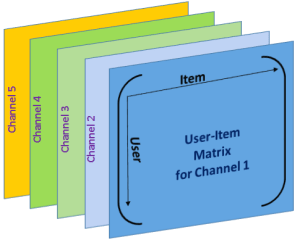The business postures and related underneath architectures of data platforms have been evolving over the years: from data warehouses to data lakes to data lakehouses. This evolution is driven by the increasing demand for data-driven decision making and the need to effectively manage and analyze large volumes of structured and unstructured data in real-time. As data systems will continue to evolve to meet the ever changing needs of varied stakeholders, and as possibilities and choices can be overwhelming, there are a few simple principles / guiding factors to build a data platform and drive its successful adoption and usage.
- CUTD (Come Use Transformed Data) is a critical principle to start with. Provide readily useful and usable data right out of the box to users. Useful as in relevant to the user’s business needs and use cases. Usable that is already processed and transformed into consumable format(s) as expected by users; this would also require providing the right tools and interfaces for users to gather insights (via queries, analytics, dashboards, ML, etc.) with minimal friction for consumption. With increasingly low-cost storage and on-demand compute oncloud, enterprises are collecting anything and everything which is already leading to a data deluge. A data platform’s investment in offering transformed data for readily harnessing insights will help build data gravity and even convert early majority customers as quickly as early adopters.
- DYOT (Do Your Own Transforms): Provide data warehousing tools for power users to perform their own data operations & transformations and so allow creating new datasets suitable for their business use cases. Again, ensuring the tools and interfaces offer minimal UX friction for data processing would augment the stickiness for early users and further help attract critical mass of new users.
- BYOD (Bring Your Own Data): Provide tools, connectors, and interfaces for users to easily and securely bring in their own data, of course within the governance and compliance guardrails of the platform. Combined BYOD and DYOT would become a significantly attractive functionality for majority users who prefer leveraging benefits from enriching their data with data shared by other participants; the platform can experience rapid growth due to network effects, shared value among participants via market place, and opportunities for participants to capture higher value via monetization of data products.
The fourth principle, BYOT (Bring Your Own Tools), depends on the business purpose of the platform. Is it a closed platform, meant for non-commercial purposes, operated as a walled-garden to be used by internal users with secured access to mostly confidential and restricted data? Or is it an open-platform, meant for Customers and Partners and other stakeholders allowed to build monetized data products on top?
A closed platform’s approach of integration, consolidation, and standardization of experience for all users within the company makes sense for internal purposes of enterprise productivity and efficiencies. Also, a closed platform’s posture usually is to discourage users from taking data out into their local systems to avoid governance and compliance nightmare.
In contrast, an open platform can take an approach of diversification and BYOT enablement (via connectors and open standards for customers and partners to bring and connect and port data into their own choice of warehouse instances, ML tools, visual layers, etc.). This makes sense for a commercial market for a few reasons:
- The open platform approach to tools/interfaces is particularly helpful to inducing external complementary innovation; the stakeholder (Customers/Partners) developers can use the data and metadata that they can access through the open interface to build compatible and complementary innovation; such opening of the platform for innovation would draw on a wider set of accessible external capabilities as well as independent experimentation;
- This open approach to interfaces/tools would be a good way for the platform to make the journey from a transactional platform (i.e., an analyst discovers a specific business insight) to a hybrid platform by adding innovation capabilities (i.e., developers discover models independently to persist back and foster more engagement and transactions);
- This also paves the path for the platform to attract more adoption, higher engagement, and so better monetization, forming a virtuous cycle.
- And to meet that open platform approach, there cannot be only one tool for one functionality that fits the needs of all Customers, dictated by the market factors such as:
- Customers/Partners come in different sizes, shapes, and maturity of their digital transformation journey; their diverse economic investments/constraints and spectrum of talent / skill sets would invariably lead to the need to support a wide menu of tools;
- Each stakeholder’s own multi-cloud strategy would also invariably require the platform to support same functionality but with a variety of equivalent tools across different clouds.
Overall, an open platform has to make it frictionless for the stakeholders to take their own data into their own managed environments for further analysis, discovery, and innovation.
Besides the above principles, any platform at scale should focus simultaneously on some critical functional and non-functional elements for its sustained success. We shall cover those elements in the next part.




 Such “How much?” analytics with established relationships to assess the degree of impact being made on the business outcomes, are the ones that truly generate the business value.
Such “How much?” analytics with established relationships to assess the degree of impact being made on the business outcomes, are the ones that truly generate the business value.

 One can construct the Activity Flow Diagram across these various states (Z0, Z1, Z2, Z3, Z4) by leveraging the Activity Tracker application within the Streaming Analytics engine; the model will enable the system to monitor the customer movement from zone to zone in real-time. The Activity Tracker application can also be leveraged to monitor in real-time various KPIs, such as the duration spent by the customer in each zone. The Duration KPI for each zone can be assigned some threshold (e.g., poor, fair, good) to trigger operational actions, such as texting promotional messages; for example, the smaller the duration consumer spends in Zone 0 and Zone 1 the better, and the larger the duration consumer spends in Zone 2 or Zone 3 or Zone 4 the better. The other KPIs can be the total number of customers in each zone in a given time window, the number of customers that move from Za to Zb as against Za to Zc, and so on.
One can construct the Activity Flow Diagram across these various states (Z0, Z1, Z2, Z3, Z4) by leveraging the Activity Tracker application within the Streaming Analytics engine; the model will enable the system to monitor the customer movement from zone to zone in real-time. The Activity Tracker application can also be leveraged to monitor in real-time various KPIs, such as the duration spent by the customer in each zone. The Duration KPI for each zone can be assigned some threshold (e.g., poor, fair, good) to trigger operational actions, such as texting promotional messages; for example, the smaller the duration consumer spends in Zone 0 and Zone 1 the better, and the larger the duration consumer spends in Zone 2 or Zone 3 or Zone 4 the better. The other KPIs can be the total number of customers in each zone in a given time window, the number of customers that move from Za to Zb as against Za to Zc, and so on.